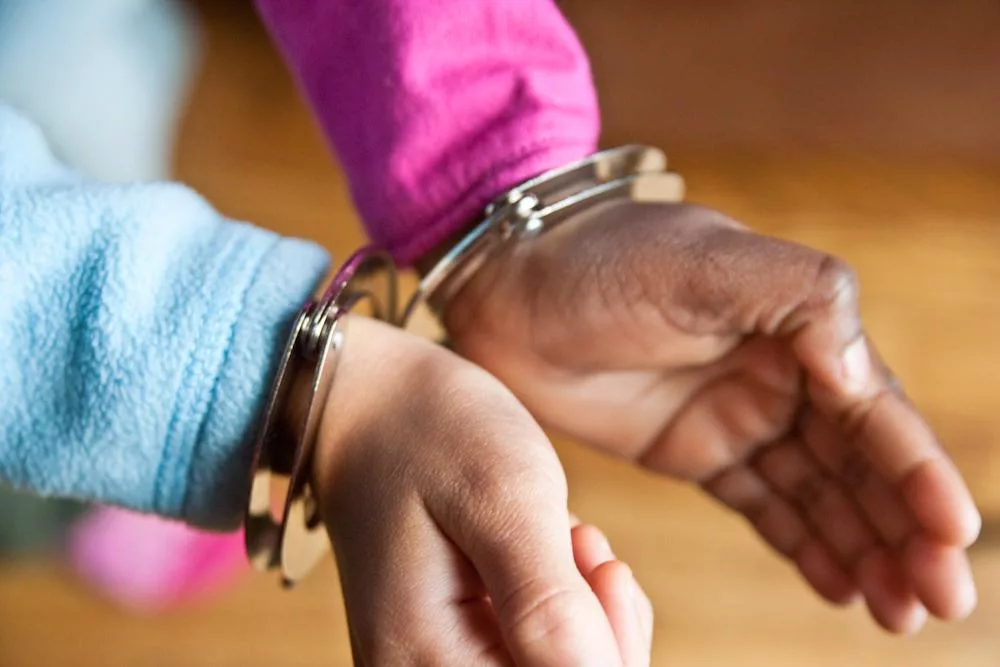Commentary
Low-Quality Schools Are a Double Punishment for Youth in Prison
Poor educational opportunities in youth prisons lead to reduced earnings and increased unemployment later in life.

For years, youth incarceration has been falling across the country as calls to close youth prisons have grown louder. And for good reason. In theory, juvenile justice is supposed to be rehabilitative. In reality, youth prisons are often harmful settings for the thousands of young people who spend time behind bars in any given year. Evidence shows that these facilities cause further trauma to many incarcerated youth, ranging from sexual assault to extensive isolation to overdose death.
That harm extends to the education young people receive while in prison. For many incarcerated youth, the schools they attend while in juvenile detention end up being their last experience with formal education. Studies show that few children complete a high school degree while in prison. Many also don’t return to school after their incarceration ends—and those who do are less likely to graduate. Students educated in juvenile facilities are almost always held to lower academic standards and have fewer opportunities, especially when it comes to advanced classes, than their peers in traditional schools. The low-quality education youth receive while incarcerated contributes to reduced lifetime earnings and increased probability of unemployment and underemployment.
These poor educational opportunities, compounded by the punitive experience of incarceration, result in a lifelong double punishment. And due to the disproportionate number of incarcerated youth who are disabled, Black, American Indian, or Alaska Native, or who are (or perceived to be) LGBTQIA+, it’s a punishment that falls most heavily on those who are already most vulnerable.
The dismal quality of education in youth prisons is a systemic problem. The system is designed to fail, thanks to fragmented governance models, nonexistent accountability, and disjointed finance systems that make the relative stability, and effectiveness of traditional schools impossible to replicate inside a prison. Overworked and often underpaid educators must navigate the restrictive confines of a youth prison administration that controls everything from who can attend class, to how technology is used, to when students can access learning materials outside the school day.
These limitations demand an unrealistic level of coordination across agencies that effectively ensures students get poor educational experiences.
State leaders often focus on helping educators and students make the best of these inherently flawed schools. But while they do that, it’s essential for them to acknowledge that no reforms can turn a youth prison into a healthy place to learn. States should focus on expanding promising alternatives that provide youth with more effective environments for learning. Community-based options such as day treatment programs and high-quality alternative schools can better meet young people’s needs, intervene sooner, and keep them closer to support networks that can provide support beyond academics.
Substantial research supports the efficacy of holistic prevention and intervention resources such as functional family therapy, where specialists do sustained, intensive work with a family to address the underlying causes of a young person’s delinquent behavior and support enduring change. Many community-based organizing efforts focus on redirecting resources from juvenile incarceration toward investments in prevention and adjudications ordering care-based intervention, which allow young people facing charges to remain at home with supervision instead of in a detention facility. In addition, some juvenile courts are rethinking their approaches to focus on rehabilitation instead of incarceration. Students who receive these interventions often attend school in their communities—either at their local high school, an alternative school, or through an individualized program.
Declining youth incarceration rates in the U.S. are a sign of progress in the justice system. But behind this hopeful trend are thousands of young people who remain behind bars, where they are denied the education they deserve, with lifelong consequences. The first step to addressing this problem is to acknowledge that the design of a youth prison is fundamentally incompatible with the educational needs of young people and will not be able to provide the learning experiences all students deserve. To truly meet the needs of incarcerated youth, we must look to alternatives that can help keep kids out of institutional care in the first place.
